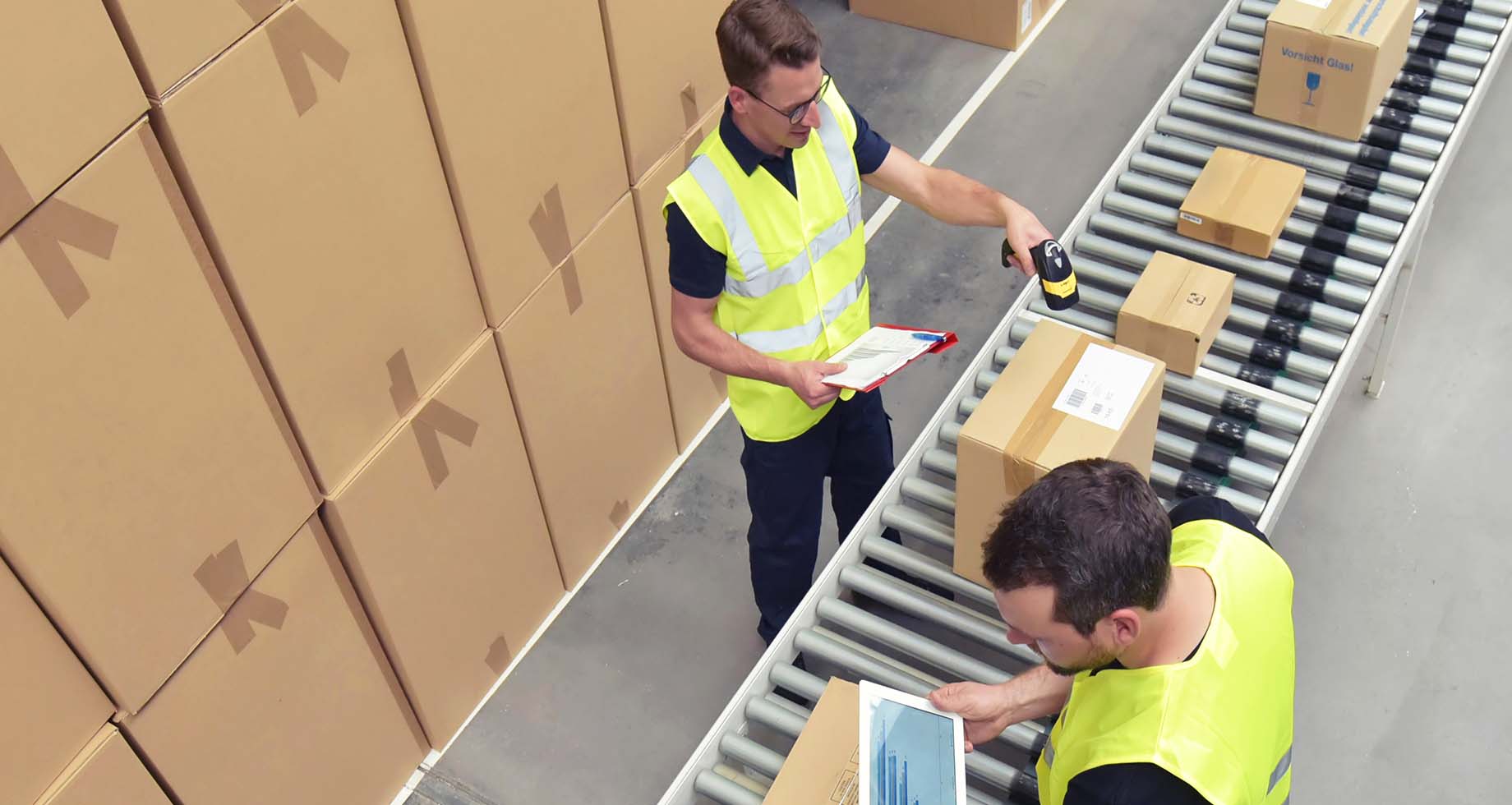The Average Order Value: AOV is the average total of each order, during a particular period of time.
Monitoring and measuring the AOV helps you assess how successfully you are making deals in your webshop. Is your product range interesting enough to generate interest in buying multiple products? And is your cross and upsell strategy aligned to this and sufficiently visible?
If you sell computers, are you also selling the monitors and accessories that go with them? Do quantity discounts motivate your customers to buy more?
It is a simple calculation, which affords a great deal of insight into the shopping behavior of your customers and your company’s performance over a particular period of time.
turnover ÷ number of orders = AOV
The AOV gives insight into the online purchasing behavior of your corporate customers. If you calculate this for specific CRM segments you can identify the most valuable customers, and then you can make use of a personalized proposition and rewards.
In combination with the success percentage or conversion ratio, the AOV provides insight into how much you earn from a certain number of site visits per intended target group.
Why focus on the level of the average order value?
In many verticals, the acquisition of new B2B e-commerce customers (lead generation) is time-consuming, difficult, and expensive. It calls for a significant investment in new business marketing, search machine optimization, and advertising. We are not suggesting that you should stop doing this, but that you should make sure that you generate as much turnover as possible from your existing online traffic and customer base.
Increasing the AOV is one of the most effective and cost-efficient ways to increase income and cash flow. Whilst increasing the number of new visitors mostly involves researching and carrying out expensive, complicated online and offline marketing, the possibilities for increasing the AOV with existing customers and regular visitors are closer than you think. With Propeller CRM and order segments and analyses, you can draw on meticulously built-up user data which you can use to refine your cross and upsell proposition.
Optimizing your B2B e-commerce environment with the aim of increasing the AOV can help you to bolster your business during periods when you have less online traffic; for example, due to promotional campaigns by competitors or during certain public holidays and longer holidays periods. During these types of periods, you probably have fewer visitors, but you can generate higher income as the result of an optimized AOV strategy.
The next question is how you can persuade your customers to buy more items and to spend more money each time they make a purchase online? We will describe four strategies that you can make use of with – or without – smart investments.
1. Product combinations
Product combinations often comprise a primary product with accompanying or suitable accessories.
With product combinations, you can encourage the simultaneous purchase of multiple items and create a win-win situation for you and your customer. With a combination discount, your AOV increases, whilst the combination purchase price in comparison with the total of the products offered separately goes down. You can also make a combination purchase relevant for the customer without necessarily giving a discount. In addition, you save on delivery costs this way, for you and your customer; you encourage repeat purchases of separate products from the product combinations, and over time you optimize the presentation and content of your product combinations.
Here are a few handy Propeller analysis tools that you can use to compose product combinations on the basis of search and purchase behavior.
- CMS: landing page, banner, button, text, and picture
- CRM: Analysis of people
- CRM: People segments
- E-business: Analysis of orders
- E-business: Order segments
- PIM: Analysis of catalog
- E-marketing: Newsletters
- E-marketing: Autopilots
There are many ways you can make up product combinations. For instance, online shops in the fashion industry have a ‘Shop the Look’ option, with which customers can buy a complete outfit (often three or four items) together in one go. This technique can usefully be applied in the office supplies sector; for example, by putting together a modern suite of office furniture and equipment under the theme of the smart office. If you sell laptops, then you can propose combinations with accessories like screens, mouses, trackpads, and printers.
In practice, you can pre-package product combinations and present them online with the aim of further simplifying the purchase of product combinations for your online visitor.
Working with product combinations is an effective sales technique for increasing the AOV; to foster a pleasant shopping experience, to personalize the proposition, to steal a march on your competitors and, in times of reduced visits to the website, to still make the most of your online traffic with relevant and attractive content.
2. Cross and Upselling
Online shoppers visit your webshop with a direct or indirect purchase intention.
By displaying related, alternative, and check-out products (add-on sales) at the right time and with the right communication in the purchase process, you can tempt the customer to buy more products in one order, and you can increase the AOV.
Propeller offers you the following possibilities for applying these techniques. We will elucidate two of these options.
- Accessories: You can add accessories to a product,
- Accessory for: offering a product as an accessory for specific products
- Adding related products to a product
- Displaying alternative products
- Displaying options
- Displaying parts
Upselling
Upselling is a perfect way to suggest a more expensive or more complete product. If possible, with a better margin. It is very important to point out the unique characteristics of the alternative product straight away with the aim of tempting the customer.
Cross-selling
Cross-sell products are shown in both the shopping cart and on the product page.
Ensure that the products are not too highly-priced, to increase the chance that the customer will decide to buy. Minimizing the options reduces choice stress and shows ownership and expertise. Don’t forget to explain why a cross-sell purchase is needed. You can do this perfectly in the title, product description, and/or plus and minus points.
Online content and communication
Another low-threshold way to apply these techniques is to refer to them in online content; this has the advantage that you reinforce the search word-related SEO. Besides this, chatting and calling a customer can help to raise the average order value by demonstrating expertise and knowledge in the context of ‘have you already considered this option?’.
3. Rewards
An effective way to get online visitors to spend more in one order is to stimulate extra purchases. In Propeller this is possible on the one hand with a direct reward in the form of a voucher or incentive and on the other hand with an indirect reward in the first instance, by awarding value points and saving up for a free product or discount. Several Propeller reward options are listed below, which can help you to increase the AOV:
- Price: Customer-specific prices for users & user groups
- Price: Bulk or quantity discount
- Price: Temporary special offer price
- E-business: Vouchers
- Incentive: Discount on the order total for spends of amount ‘X’
- Incentive: Awarding value points with an order
- Incentive: Giving away a bonus item for a total amount of ‘X’
- Incentive: Free shipping above amount ‘X’
4. Personalization and recommendations
The aim of Personalization and recommendations is to respond to the direct needs of your customer. The purchase intention will be greater if the offer is personally relevant and satisfies their needs. One of the most important goals of marketing is to appeal to your customer as directly as possible based on their direct need, at the right time and at the right price; because the purchase intention will then be at its greatest. There are two important methods for helping your customers to find the right products:
1. Personalization
Propeller provides possibilities for offering a personalized shopping experience.
This may be anything from simply using merge fields to personalize a welcome message with the name of your customer in the title and text, to developing advanced personalization of landing pages with promotions and product selection. We distinguish four levels of personalization.
2. Recommendations
Either consciously or unconsciously, customers often don’t know exactly what they want or need, and are looking for help and advice during their purchase process. Ideally delivered when the iron is hot. As a merchant, you can use the information that you have collected about customers to offer them a personalized product selection. Based on various conditions, Propeller software enables you to segment customers and orders and to personalize their product selection, with the aim of raising the AOV. The tools listed below enable you to analyze and target.
Examples for making recommendations in practice can be based on:
Search history
Responding to general and personal search terms
Type of business
Schools need different products than hospitals
Order history
Use the order history to offer alternatives or related products
Customer Intelligence segments
Use customers’ order history with similar demographic data to recommend products to other customers.
Analysis
- E-business: Analyze orders
- E-business: Order segments
- PDM: Analyze catalog
Targeting
- CMS: personal landing page, banners, buttons, and text
- Personalized product selection
- Campaign Manager: personalized and segmented
- ampaign Manager: Autopilots (trigger based)





